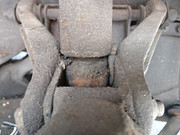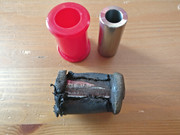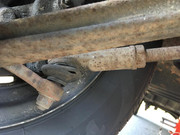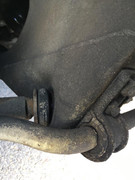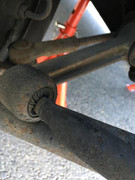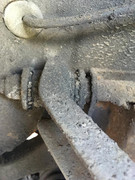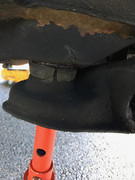Page 1 of 1
Diagnosing noises
Posted: Mon Jun 18, 2018 12:24 pm
by HQentity
Hiya all!
Just looking for a bit of advice really, I'm getting metal on metal noise when going over bumps. I've got a few ideas what it could be - I'm thinking the anti roll bar mounts, or possibly subframe mounts? But how do you know when they've had it? How do I know what's gone?
Is there anything down there that if I unscrew it, I won't be able to put it back together without clamps or tools other than sockets and spanners? I don't want this getting me in trouble!
Many thanks to you all!
Re: Diagnosing noises
Posted: Tue Jun 19, 2018 5:56 pm
by MIG Wielder
Hi Kyle, Elusive noises are always good fun to track down. One advantage of owning a car for a long time is you acquire a 6th sense for what the problem is. Now if your intuition says "ARB" then you are probably right. At the rear the ARB is bolted to the trailing arms and the bolts do seem to work loose. Simple job with 2 spanners when its on axle stands. I found mine by noticing that if I went over a speed bump straight so that both wheels went up and down together, no problem, If I went over it skew, I'd get a clunk.
At the front the ARB has inner and outer bushes. Both wear and the inner brackets can fracture. Easy to spot those. Its rather more complicated to fix as the front has to be on axle stands while the lower wishbones are raised to get the outer joints in place. Doing this symmetrically is the tricky bit. Don't forget the cylindrical spacers inside the lower arms.
Other favourite places for knocks and rattles at the back are the trailing arm bushes and the tie rod. Both ends. In my experience standard shock absorbers don't seem to wear much. A lot will depend on the sort of roads you drive on.
Try lifting and bouncing on each corner of the car in turn ( better with 2 people ) and then lifting and bouncing centrally on the front / rear bumpers for a quick diagnosis.
HTH,
Tony.
Re: Diagnosing noises
Posted: Tue Jun 19, 2018 6:10 pm
by xvivalve
Check your wheel bearings.
Re: Diagnosing noises
Posted: Tue Jun 19, 2018 9:21 pm
by Toledo Man
The tie bar bushes are one of the first things to go. I replaced mine with SuperFlex and they're still in fine shape.
Re: Diagnosing noises
Posted: Tue Jun 19, 2018 9:51 pm
by HQentity
Thanks very much for your time you lovely people.

Tony, your diagnosis about your speed bumps is exactly whats happening with me - if ever I round a corner over a speed bump, I'll get a bit of clunking. How do I know they're gone? Am I looking for the bushes to be too soft? Cracked? Play in the ARB
I did give bumping the corners a go to see if I could replicate the clunking myself so I knew where the problem was, but I couldn't get it to go. Maybe I need someone a bit heavier!

Checking wheel bearings, is that just spinning the wheels and making sure they move freely?
I'll check the tie bar bushes, thanks! Is that just the same concept as the ARB bushes as mentioned above then?

Thanks!!
Re: Diagnosing noises
Posted: Wed Jun 20, 2018 6:46 am
by Toledo Man
The tie bars run alongside the front ARB. There's a couple of bushes at the front end where they go through the front subframe. This is what mine was like back in April 2009.
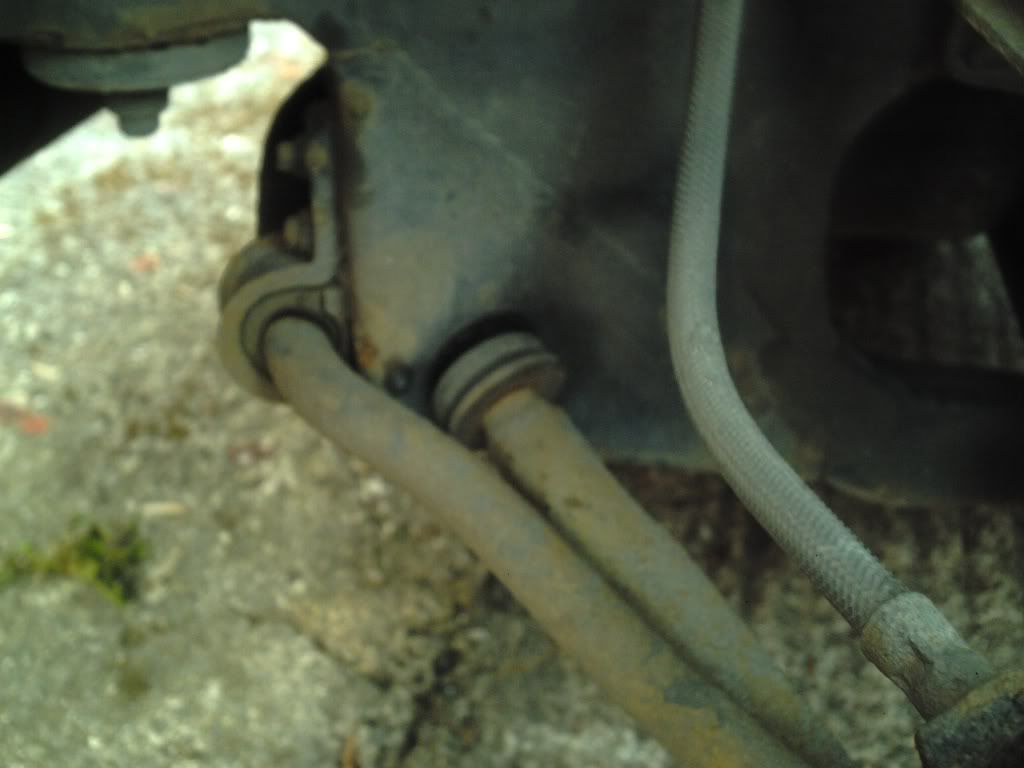
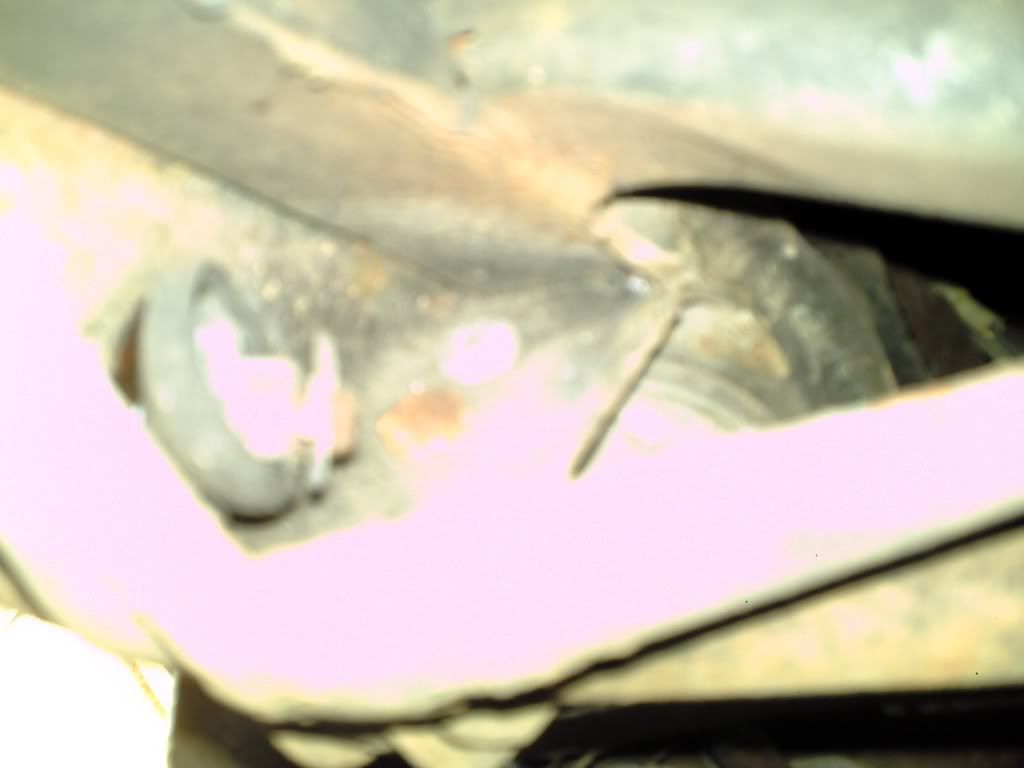
With the front wheel bearings, you do indeed spin the wheel to check for any noises (there should be none) and you wiggle the wheel slide to side and top to bottom to check for excessive play. The bearings are tapered to there should be a small amount of free play (most MoT testers don't know this).
Re: Diagnosing noises
Posted: Wed Jun 20, 2018 9:22 am
by Richard the old one
I have found that it can be difficult to see if the front tie bar bushes have worn without taking them out as they can wear on the inside and which allows the tie bar to rub on and wear the subframe. It is well worth fitting poly bushes in place of the original rubber type as they last.
Re: Diagnosing noises
Posted: Wed Jun 20, 2018 9:53 am
by xvivalve
Richard the old one wrote: ↑Wed Jun 20, 2018 9:22 am
I have found that it can be difficult to see if the front tie bar bushes have worn without taking them out as they can wear on the inside and which allows the tie bar to rub on and wear the subframe. It is well worth fitting poly bushes in place of the original rubber type as they last.
I would concur with this, but the symptomatic noise here is a metal on metal squeak which persists long before any 'clonk', the latter generally requiring at least one bush to have worn to the extent it falls away from the car! Interestingly, I've found the tie bar wears rather than the subframe hole enlarging, which is good in that the tie bar is far easier to replace!
I'd still look at wheel bearings first/as well as; in my opinion, a far more common malady requiring adjustment or replacement.
Re: Diagnosing noises
Posted: Wed Jun 20, 2018 5:59 pm
by MIG Wielder
I forgot to enquire; are these metal on metal noises at the front or the back. Or 1/2 way along ?
Doing the easy bits first, if the noises are central underneath the car I'd look at the gearbox mount. This gets oil on it from the gearbox / O.D. and goes soggy. You may get clutch judder with this as well. If you have a non-O.D. box there are 2 small cotton reel mounts. The rubber separates from the metal of the mount. The other possibility is the exhaust bracket that attaches to the back of the gearbox has broken, so the exhaust is waggling around.
Noises at the back end are a bit more difficult to locate on the Dolomite as ( for instance) the trailing arm is in constant downwards compression from the rear spring when jacked up for checking. So to check the rear bush you need to support the back of the car solidly on axle stands then with a strong metal bar, see if you can detect any movement in the bush when you lever upwards between the trailing arm and the bush.
Similarly in the same state, if you can lift the front end of the trailing arm against its bush its time for replacement. I do this with a large crowbar and a large log as a fulcrum point inboard of the trailing arm.
A failed tie rod rear bush you can pretty much see by visual inspection. The front bush can be tested with a narrow lever between the tie-rod and its housing in the same way.
And while you are there check the exhaust mounts. A simple visual check will tell a lot.
HTH
Tony.
Re: Diagnosing noises
Posted: Thu Jun 21, 2018 10:32 pm
by HQentity
Thank you again fo all your help! Given the opportunity I'll try and check tomorrow to see if i can establish what the problem is.

Thanks for the pictures, am I right to think thats what they're NOT to look like - that they need replacing like that?
I will be definitely taking that advice on board and fitting poly bushes wherever the wear has happened.

Does it matter if they're not the same on both sides? & I will definitely be checking the bearings too.

For me Tony, I'm confident the noises have been coming from the front right (starboard, offside, whatever you prefer

) portion of the car. I get little to no clutch judder (only really occasionally in reverse). I'm still non-O/D.
Thanks you for your advice, I'll see how I get on!

Re: Diagnosing noises
Posted: Thu Jun 21, 2018 11:16 pm
by Galileo
Re: Diagnosing noises
Posted: Fri Jun 22, 2018 12:15 am
by xvivalve
Spinning the wheel will likely be noisy from the pads bearing on the disc. Wobble side to side to check wheel bearings as top to bottom can show any play in lower ball joint.
Re: Diagnosing noises
Posted: Fri Jun 22, 2018 3:24 pm
by HQentity
Re: Diagnosing noises
Posted: Sat Jun 23, 2018 5:48 pm
by MIG Wielder
HQentity wrote: ↑Thu Jun 21, 2018 10:32 pm
Thank you again fo all your help! Given the opportunity I'll try and check tomorrow to see if i can establish what the problem is.

Thanks for the pictures, am I right to think thats what they're NOT to look like - that they need replacing like that?
Does it matter if they're not the same on both sides? & I will definitely be checking the bearings too.

For me Tony, I'm confident the noises have been coming from the front right (
starboard, offside, whatever you prefer

) portion of the car.
Yes, the bushes should be the same both sides ideally both rubber or both poly; for nice handling ( One soggy rubber one side and one nice hard poly; bush on the other side might give odd handling. )
Raf's good photos of the shock absorber bush are just what they shouldn't look like

How can I guess you are on the South Coast and have a nautical interest ?
Cheers for now,
Tony.
Re: Diagnosing noises
Posted: Sat Jun 23, 2018 11:16 pm
by Carledo
OK, from the top, pic 1 the track rod end gaiter is shot and WILL fail an MOT (if presented) This doesn't necessarily mean the track rod end is shot, you need further wiggling tests to ascertain this, If not, the club do gaiters to replace the duff ones.
Pic 2 The tie bar bush and antiroll bar bush don't look THAT bad, The tie bar bush always shows a big gap at full extension, even when new.
Pic 3 the antiroll bar link, i'm gonna be controversial here and say that's probably OK for another 10 years! Mine look like that on the Carledo and are still working fine and not knocking.
Pic 4 The inner upper wishbone bushes, these LOOK horribly perished, but the bit you can see is not the bit that does the work. I've replaced loads that look like this (with poly) and i've still had to press them out, they've been fine! My money says they are not your culprit!
Pic 5 The rear subframe bush, this is knackered, get some poly in there pronto! When changing it, check the cups in the subframe and the conical washers underneath the nuts too. You can change just the rear bushes, but best to do both sides at once!
And check the lower shock mount bush as per Rafe's post, this is a common fail point, especially if aftermarket fancy shox have been fitted. I looked at mine on the Carledo recently, prior to it's MOT, as I have Gaz fitted. What I found was good news as far as the bushes were concerned, no wear either side, but the N/S bolt had snapped clean through and the 2 broken ends were only holding in by gravity and friction. No knocks or clonks to tell me it had failed though! I fitted new bolts both sides, just in case!
Steve


